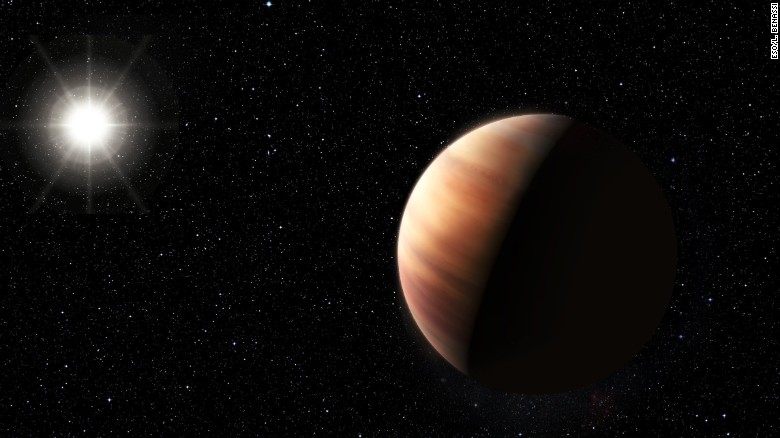A group of astronomers used ESO 3.6 meter telescope to identify a planet similar to our Jupiter orbiting a Sun-like star at the same distance similar to our Jupiter from Sun. The star name is HIP-11915.
As per the present theories, the formation of Jupiter like heavy mass planets play an important role in shaping the architecture of planetary systems. The existence of a Jupiter like planet in a Jupiter-like orbit around a Sun-like star opens up the possibility of a system of planets around that star may be similar to our Solar System. The Star HIP 11915 is about the same age as our Sun and its composition is similar to Sun which suggests that there may be rocky planets orbiting around that star.
As per the most recent theories, the arrangement of our Solar System, so supportive to life, was made possible due to the presence of Jupiter and the gravitational influence of this gas giant exerted on our Solar System during the formative years. There fore it would seem that finding a Jupiter twin is an important milestone in finding a planetary system similar to our own Solar System.
The Jupiter twin is 200 light years from our Earth. The image below shows an artist's impression of the Jupiter twin orbiting around the Sun like star..

As per the present theories, the formation of Jupiter like heavy mass planets play an important role in shaping the architecture of planetary systems. The existence of a Jupiter like planet in a Jupiter-like orbit around a Sun-like star opens up the possibility of a system of planets around that star may be similar to our Solar System. The Star HIP 11915 is about the same age as our Sun and its composition is similar to Sun which suggests that there may be rocky planets orbiting around that star.
As per the most recent theories, the arrangement of our Solar System, so supportive to life, was made possible due to the presence of Jupiter and the gravitational influence of this gas giant exerted on our Solar System during the formative years. There fore it would seem that finding a Jupiter twin is an important milestone in finding a planetary system similar to our own Solar System.
The Jupiter twin is 200 light years from our Earth. The image below shows an artist's impression of the Jupiter twin orbiting around the Sun like star..
